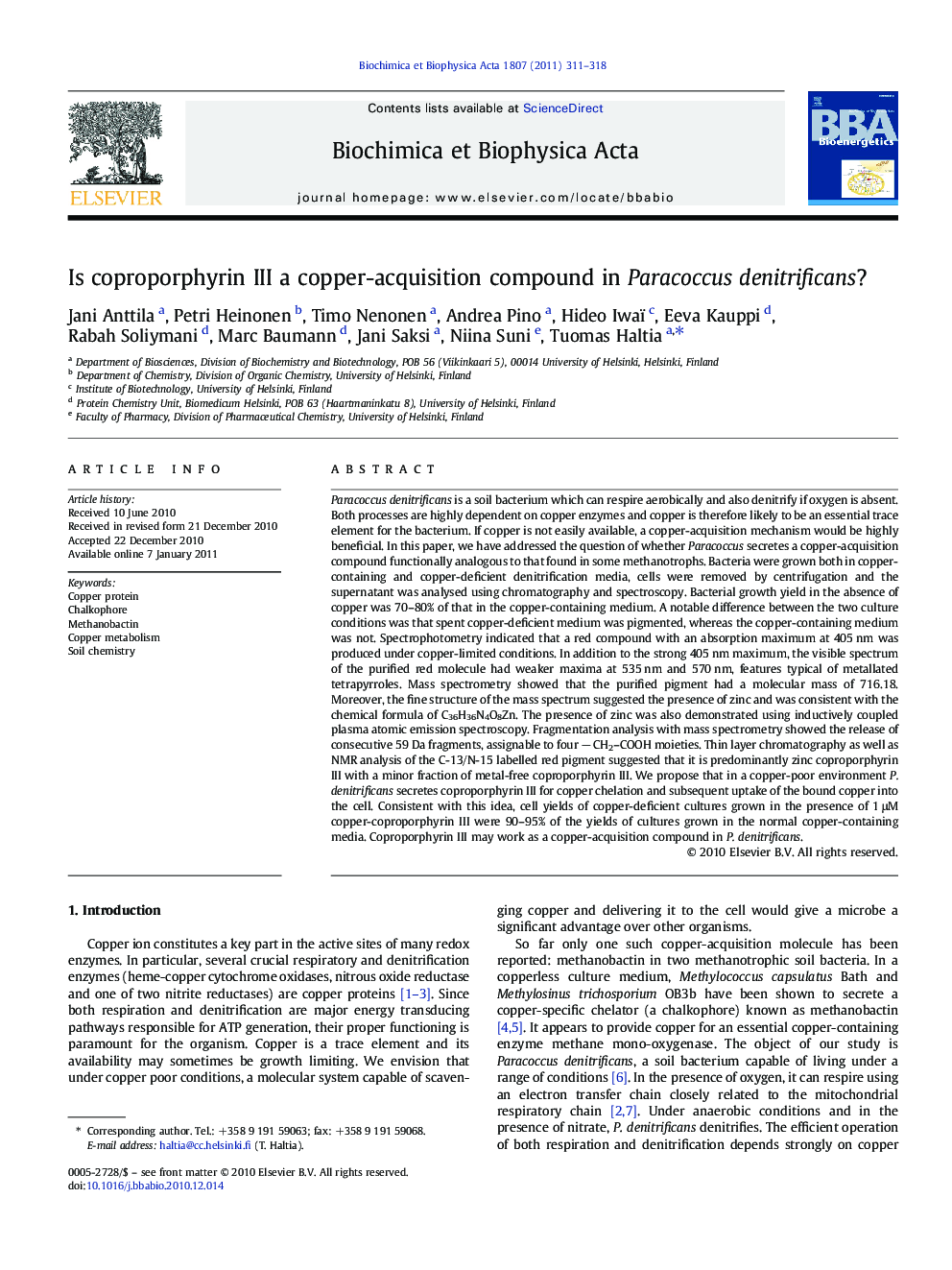| کد مقاله | کد نشریه | سال انتشار | مقاله انگلیسی | نسخه تمام متن |
|---|---|---|---|---|
| 1942798 | 1052630 | 2011 | 8 صفحه PDF | دانلود رایگان |

Paracoccus denitrificans is a soil bacterium which can respire aerobically and also denitrify if oxygen is absent. Both processes are highly dependent on copper enzymes and copper is therefore likely to be an essential trace element for the bacterium. If copper is not easily available, a copper-acquisition mechanism would be highly beneficial. In this paper, we have addressed the question of whether Paracoccus secretes a copper-acquisition compound functionally analogous to that found in some methanotrophs. Bacteria were grown both in copper-containing and copper-deficient denitrification media, cells were removed by centrifugation and the supernatant was analysed using chromatography and spectroscopy. Bacterial growth yield in the absence of copper was 70–80% of that in the copper-containing medium. A notable difference between the two culture conditions was that spent copper-deficient medium was pigmented, whereas the copper-containing medium was not. Spectrophotometry indicated that a red compound with an absorption maximum at 405 nm was produced under copper-limited conditions. In addition to the strong 405 nm maximum, the visible spectrum of the purified red molecule had weaker maxima at 535 nm and 570 nm, features typical of metallated tetrapyrroles. Mass spectrometry showed that the purified pigment had a molecular mass of 716.18. Moreover, the fine structure of the mass spectrum suggested the presence of zinc and was consistent with the chemical formula of C36H36N4O8Zn. The presence of zinc was also demonstrated using inductively coupled plasma atomic emission spectroscopy. Fragmentation analysis with mass spectrometry showed the release of consecutive 59 Da fragments, assignable to four − CH2–COOH moieties. Thin layer chromatography as well as NMR analysis of the C-13/N-15 labelled red pigment suggested that it is predominantly zinc coproporphyrin III with a minor fraction of metal-free coproporphyrin III. We propose that in a copper-poor environment P. denitrificans secretes coproporphyrin III for copper chelation and subsequent uptake of the bound copper into the cell. Consistent with this idea, cell yields of copper-deficient cultures grown in the presence of 1 μM copper-coproporphyrin III were 90–95% of the yields of cultures grown in the normal copper-containing media. Coproporphyrin III may work as a copper-acquisition compound in P. denitrificans.
Research Highlights
► Denitrification and cell respiration depend strongly on copper enzymes.
► Does Cu-limited Paracoccus denitrificans produce copper-acquisition molecules?
► Under copper-poor conditions, the bacterium secretes a red pigment.
► This pigment is zinc coproporphyrin III with some metal-free coproporphyrin.
► The free coproporphyrin could act as a copper-acquisition compound.
Journal: Biochimica et Biophysica Acta (BBA) - Bioenergetics - Volume 1807, Issue 3, March 2011, Pages 311–318